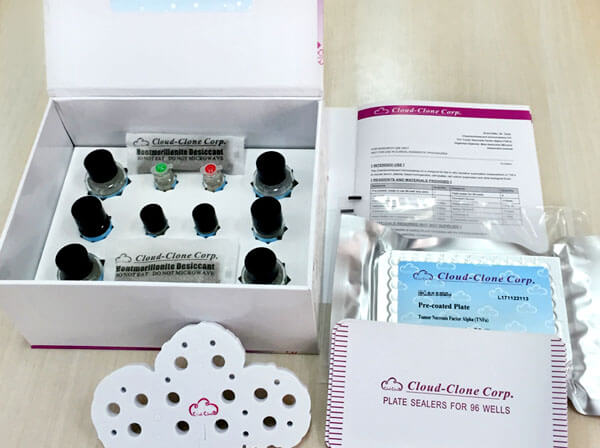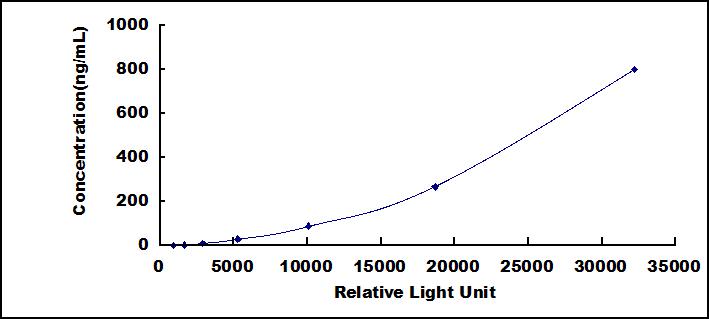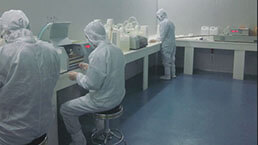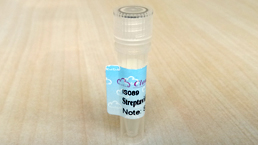CLIA Kit for Low Density Lipoprotein (LDL) 

- UOM
- FOB US$ 588.00 US$ 840.00 US$ 3,780.00 US$ 7,140.00 US$ 58,800.00
- Quantity
Overview
Properties
- Product No.SCB107Hu
- Organism SpeciesHomo sapiens (Human) Same name, Different species.
- ApplicationsChemiluminescent immunoassay for Antigen Detection.
Research use only - DownloadInstruction Manual
- CategoryMetabolic pathwayCardiovascular biologyHepatologyGastroenterologyNutrition metabolism
Sign into your account
Share a new citation as an author
Upload your experimental result
Review

Contact us
Please fill in the blank.
Recovery
Matrices listed below were spiked with certain level of recombinant Low Density Lipoprotein (LDL) and the recovery rates were calculated by comparing the measured value to the expected amount of Low Density Lipoprotein (LDL) in samples.
| Matrix | Recovery range (%) | Average(%) |
| serum(n=5) | 79-99 | 96 |
| EDTA plasma(n=5) | 95-102 | 98 |
| heparin plasma(n=5) | 92-99 | 96 |
Precision
Intra-assay Precision (Precision within an assay): 3 samples with low, middle and high level Low Density Lipoprotein (LDL) were tested 20 times on one plate, respectively.
Inter-assay Precision (Precision between assays): 3 samples with low, middle and high level Low Density Lipoprotein (LDL) were tested on 3 different plates, 8 replicates in each plate.
CV(%) = SD/meanX100
Intra-Assay: CV<10%
Inter-Assay: CV<12%
Linearity
The linearity of the kit was assayed by testing samples spiked with appropriate concentration of Low Density Lipoprotein (LDL) and their serial dilutions. The results were demonstrated by the percentage of calculated concentration to the expected.
| Sample | 1:2 | 1:4 | 1:8 | 1:16 |
| serum(n=5) | 89-102% | 86-99% | 86-101% | 98-105% |
| EDTA plasma(n=5) | 92-101% | 83-102% | 94-101% | 81-91% |
| heparin plasma(n=5) | 78-91% | 97-105% | 87-99% | 98-105% |
Stability
The stability of kit is determined by the loss rate of activity. The loss rate of this kit is less than 5% within the expiration date under appropriate storage condition.
To minimize extra influence on the performance, operation procedures and lab conditions, especially room temperature, air humidity, incubator temperature should be strictly controlled. It is also strongly suggested that the whole assay is performed by the same operator from the beginning to the end.
Reagents and materials provided
| Reagents | Quantity | Reagents | Quantity |
| Pre-coated, ready to use 96-well strip plate | 1 | Plate sealer for 96 wells | 4 |
| Standard | 2 | Standard Diluent | 1×20mL |
| Detection Reagent A | 1×120µL | Assay Diluent A | 1×12mL |
| Detection Reagent B | 1×120µL | Assay Diluent B | 1×12mL |
| Substrate A | 1×10mL | Substrate B | 1×2mL |
| Wash Buffer (30 × concentrate) | 1×20mL | Instruction manual | 1 |
Assay procedure summary
1. Prepare all reagents, samples and standards;
2. Add 100µL standard or sample to each well. Incubate 1 hours at 37°C;
3. Aspirate and add 100µL prepared Detection Reagent A. Incubate 1 hour at 37°C;
4. Aspirate and wash 3 times;
5. Add 100µL prepared Detection Reagent B. Incubate 30 minutes at 37°C;
6. Aspirate and wash 5 times;
7. Add 100µL Substrate Solution. Incubate 10 minutes at 37°C;
8. Read RLU value immediately.

Test principle
The microplate provided in this kit has been pre-coated with an antibody specific to Low Density Lipoprotein (LDL). Standards or samples are then added to the appropriate microplate wells with a biotin-conjugated antibody specific to Low Density Lipoprotein (LDL). Next, Avidin conjugated to Horseradish Peroxidase (HRP) is added to each microplate well and incubated. Then the mixture of substrate A and B is added to generate glow light emission kinetics. Upon plate development, the intensity of the emitted light is proportional to the Low Density Lipoprotein (LDL) level in the sample or standard.;
Giveaways
Increment services
Citations
- Atheroprotective effect of oleoylethanolamide (OEA) targeting oxidized LDL.NCBI: PMC3896367
- Atheroprotective effect of oleoylethanolamide (OEA) targeting oxidized LDLPubmed:24465540
- PCSK9 deficiency unmasks a sex-and tissue-specific subcellular distribution of the LDL and VLDL receptors in micePubMed: 26323289
- 27-Hydroxycholesterol contributes to disruptive effects on learning and memory by modulating cholesterol metabolism in the rat brainPubMed: 25987203
- Protective role of n6/n3 PUFA supplementation with varying DHA/EPA ratios against atherosclerosis in micePubmed:27142749
- Red paprika (Capsicum annuum L.) and its main carotenoid capsanthin ameliorate impaired lipid metabolism in the liver and adipose tissue of high-fat diet-induced obese miceS1756464617300555
- Combined Effects of Curcumin and Lycopene or Bixin in Yoghurt on Inhibition of LDL Oxidation and Increases in HDL and Paraoxonase Levels in Streptozotocin-Diabetic Rats.pubmed:28333071
- THE FUNCTION OF SIALIC ACID AS A RADICAL SCAVENGER IN EXPERIMENTAL HYPOTHYROIDISM WITH AND WITHOUT HYPERLIPIDEMIA. Hiperlipidemili ve …163
- Red paprika (Capsicum annuum L.) and its main carotenoid capsanthin ameliorate impaired lipid metabolism in the liver and adipose tissue of high-fat diet-induced obese mice 10.1016:j.jff.2017.01.044
- Effects of insulin analogs as an add-on to metformin on cutaneous microcirculation in type 2 diabetic patients pubmed:28954218
- Oxidized low-density lipoprotein promotes osteoclast differentiation from CD68 positive mononuclear cells by regulating HMGB1 releasepubmed:29146189
- Anthocyanin Cyanidin-3-Glucoside Attenuates Platelet Granule Release in Mice Fed High-Fat Diets.pubmed:28978870
- Bifenthrin exerts proatherogenic effects via arterial accumulation of native and oxidized LDL in rats: the beneficial role of vitamin E and seleniumPubmed: 30465240
- Alteration of circulating innate lymphoid cells in patients with atherosclerotic cerebral infarctionPubmed: 30662674
- ER-residential Nogo-B accelerates NAFLD-associated HCC mediated by metabolic reprogramming of oxLDL lipophagyPubmed: 31358770
- ¡°Adjusting Internal Organs and Dredging Channel¡± Electroacupuncture Ameliorates Insulin Resistance in Type 2 Diabetes Mellitus by Regulating the Intestinal?¡34135611
- Effect of Acupoint Embedding on Serum Leptin and Hypothalamus Leptin Receptor Expression in Rats with Simple Obesity34659432
- High-fat diet-induced aggravation of cardiovascular impairment in permethrin-treated Wistar rats34224971
- Brown and golden flaxseed reduce intestinal permeability and endotoxemia, and improve the lipid profile in perimenopausal overweight womenPubmed:35311432















